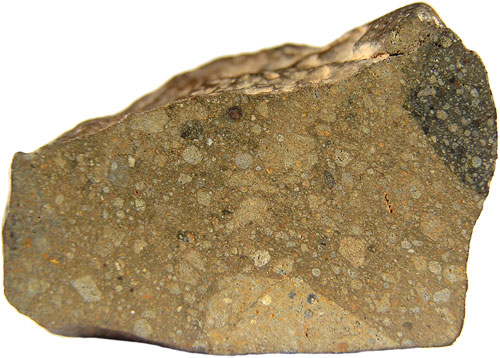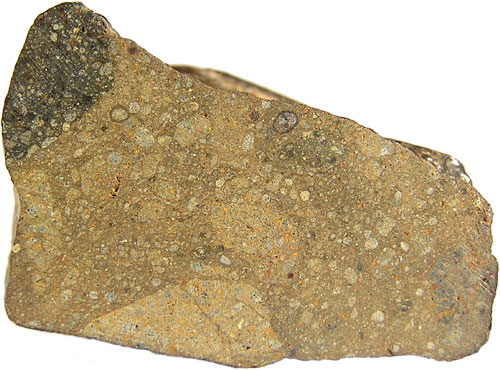


- Meteorites For Sale - Found A Meteorite? - Monthly Favourite - Meteorite Information - Classification List - Meteorite Collection - Media Centre - Home - Search - Site Map - Contact |
|
Northwest Africa 2921 (NWA 2921) NWA 2921 was discovered during 2005 in the Sahara Desert, Africa. This meteorite has been classified as a Rumurutiite Chondrite, R3.8 with a Shock Rating of S1 and a Weathering Level of W3. The specimen below is a 44.4g Halved Individual displaying an obvious dark, unequilibrated, primitive clast. The clast deceivingly resembles a carbonaceous chondrite and appears to consist of chondrules and chondrule fragments set in a dark, fine-grained matrix. The darkening of the clasts in R-Chondrites is caused by the dispersion of sulphide grains and have been found to be considerably unaltered since their formation. In fact some clasts have been found to be as low as a 3.2 subgroup and probably represent the most primitive lithology yet found in the Rumurutiites. The Rumuruti parent-body underwent thermal metamorphism after formation and subsequently the other petrologic types 4, 5 and 6 have also been found in R-Chondrite meteorites. The parent-body later underwent impact processes which excavated and liberated this material including the primitive type-3 clasts. This is evident in the samples found here on Earth such as the individual below which are usually regolith/genomict breccias. (Click here for the Meteorites Australia Glossary).This specimen is pictured on Page 88 and 89 of O. Richard Norton's wonderful "Field Guide to Meteors and Meteorites" and is part of the Meteorites Australia Collection (MA.06.0020).
Click here to view the archive of the Monthly Favourites
|


.jpg)